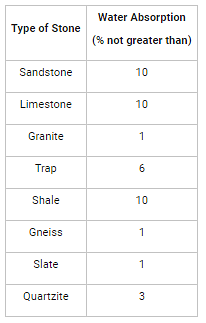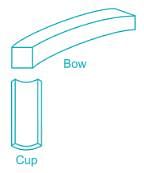Test: Building Materials- 3 - Civil Engineering (CE) MCQ
20 Questions MCQ Test Mock test series of SSC JE Civil Engineering 2025 - Test: Building Materials- 3
Which IS code is used for classification of timber for seasoning purposes?
Which one of the following is an ODD one as regards “requirements of good brick-earth”?
| 1 Crore+ students have signed up on EduRev. Have you? Download the App |
If aggregate size of 40-50 mm is to be tested for determining the proportion of elongated aggregates, the slot length of the gauge should be:
One bag of Portland cement, 50 kg in weight, would normally have a bulk volume of
The ratio of effective height to thickness of masonry walls should not be more than:
The average compressive strength of a burnt clay brick is less than 12.5 N/mm2. The allowable rating of efflorescence is:
Shear strength of timber depends on which one of the following:
The peculiar curved swellings found on the body of a tree, are called:
Consider the following statements with respect to defects of timber and identify the correct one:
As a construction material, plywood is preferred to thin planks of timber because of:
Which of the following stone has maximum % water absorption by volume?
Of the following, one which is not a type of Portland cement is
Various operations in the manufacturing of bricks are given below, of which one is not correct. The incorrect one is:
The process of taking out stones of various sizes from natural rocks is known as
Rocks having lime as their major constituent are called:
The temperature at which the bricks are burnt in kiln varies from:
|
1 videos|1 docs|64 tests
|
|
1 videos|1 docs|64 tests
|


 m
m



















